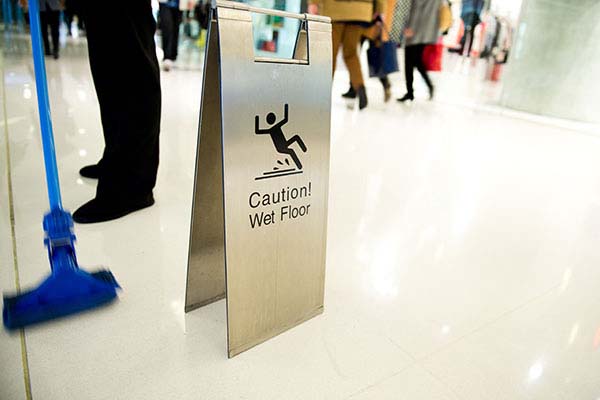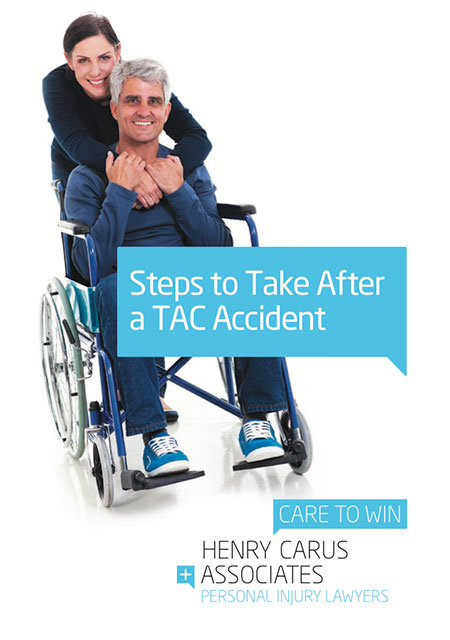
You’ve probably seen the ‘slippery when wet’ sign before. Or perhaps the ‘caution: uneven surface’ sign. Shopping centres, councils, and most other public spaces utilise these signs to inform the public of potentially dangerous situations. But if you’re injured at a public place, who’s at fault? Can you receive compensation for your injury if you didn’t pay attention to the signage?
Before turning to who is at fault, it’s useful to understand that this area of law is called public liability law, or negligence. In essence, to determine if someone has been negligent and caused you injury, two significant matters are considered:
- Duty of care: Was there a responsibility on the part of the owner of the area in which you were injured? It should be anticipated that, if your doors are open to the public, it is your duty to look after the people entering your space and prevent them from any foreseeable risk of harm and injury
- Foreseeable injury: If the accident occurred out of unforeseen tragedy, this isn’t seen as a preventable risk. For example, if a person drove their car into a restaurant where you were dining, and you were injured as a result, the owner of the restaurant is hardly likely to have foreseen that the accident would have occurred. It is not the owner’s negligence that caused the injury but the driver’s.
Private spaces
It’s important to note the distinction between being injured in a private space open to members of the public, and a purely public space. The former is an area that is privately owned by someone, even if it is open to the public. This may include a carpark or shopping centre, restaurants, bars or theatres. In those areas, the owner of the property owes each member of the public a duty of care to keep them safe from foreseeable risk. Knowing this may help you to appreciate why signs such as ‘slippery when wet’ are displayed.
If there is a wet area in a shopping centre where members of the public are likely to walk, then it is foreseeable that someone may slip and fall due to the wet floor. Therefore, to address and minimise the risk, a ‘slippery when wet’ sign is displayed. The sign may help to absolve the proprietor of liability for any injury a person may sustain from slipping on the wet floor after having ignored the sign. So if you’re injured in a private space open to members of the public, the person you may seek retribution from is the owner of that property.
The law has shown a lot less sympathy towards negligent owners of private spaces open to the public. The law recognises a need for greater responsibility on such properties to minimise all foreseeable risks of injury, and to see that anyone injured as a result of negligence is compensated.
Public spaces
A public space, however, is different. A public space is one that is not technically owned by any proprietor. This includes areas like footpaths, children’s playgrounds, ovals and sports fields. However even these spaces are cared for by public authorities such as local councils or state governments. If there are roadworks being performed on a cycle path, for example, and they are not clearly cordoned off or lit up at night, and a cyclist injures themselves as a result of the unseen roadworks at night, they may be able to seek action against the government or local council.
Negligence on the part of the council or government, however, tends to have to be very clear cut. The law usually considers that members of the public should exercise more caution in those areas. Typically, a court will consider if the injured person was in any way responsible for their own injury. With the bike riding example, if the bicycle didn’t have any lights and the injured person was riding at night, then the absence of lights on the bike may have contributed to the accident that caused the injury. As a result, the compensation amount sought may not be achieved, or if achieved can be reduced significantly.
This is called contributory negligence. It’s often what owners who are being sued will consider to reduce the extent to which they may be liable for compensation. In short, it means that the person being sued will put forward a suggestion that the injury was also caused in part by negligence of the injured person.
There are always two sides to every story. Public liability law or negligence is a great illustration of how the two sides of the story need to be scrutinised. One party may be at fault, or perhaps the stories collide to reveal an outcome where both parties are at fault.
If you’ve had a fall in a public place, get in touch with Henry Carus + Associates today and see how we can help you with your case.
 Call Us Today
Call Us Today



